A crucial part of any gym or home workout area is weight lifting equipment. To target particular muscle groups or reach particular fitness goals, a variety of equipment types can be used. The most typical kinds of weightlifting gear are listed below:
Barbells: A barbell is a weight training equipment consisting of a lengthy metal bar that has weights affixed at either end. Resistance bands have versatile applications in fitness routines, encompassing a diverse range of exercises such as squats, deadlifts, and bench presses.
Barbells are a fundamental component of weightlifting and resistance training. Diverse in nature, fitness equipment is available in multiple types to cater to varying fitness levels and exercise objectives. The following are some prevalent varieties of barbells:
Standard Barbell: Weightlifting uses this kind of barbell since it is the most fundamental and prevalent. The average length and weight are 7 feet and 45 pounds, respectively. Steel is the typical material for barbells, and they are straight, smooth objects with no knurling on the grip.

Olympic Barbell: For more serious weightlifters and athletes, there are Olympic barbells. Weighting 20 kilos (44 pounds) for males and 15 kilograms (33 pounds) for ladies, they are 7 feet long. Olympic barbells are thicker than regular barbells and contain stronger knurling on the handle to give users a greater hold during bigger exercises.
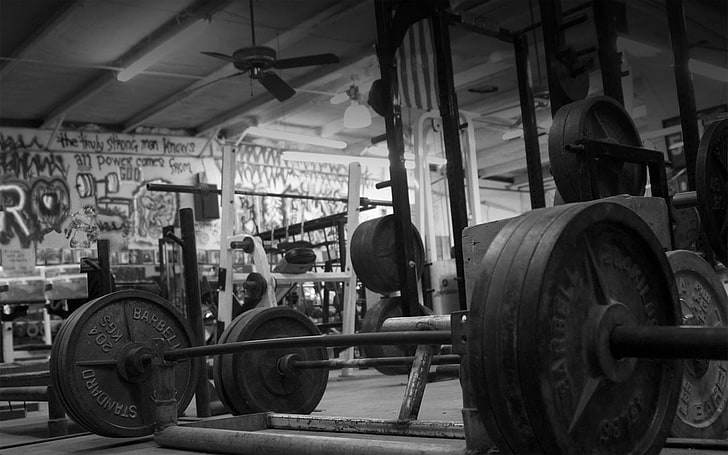
EZ Bar: A shorter, curved barbell that is gentler on the wrists and elbows is called a “EZ bar.” It is frequently used for workouts like tricep extensions, bicep curls, and others that need for a secure grip. Since the EZ bar is often smaller and lighter than a regular barbell, novices should use it.
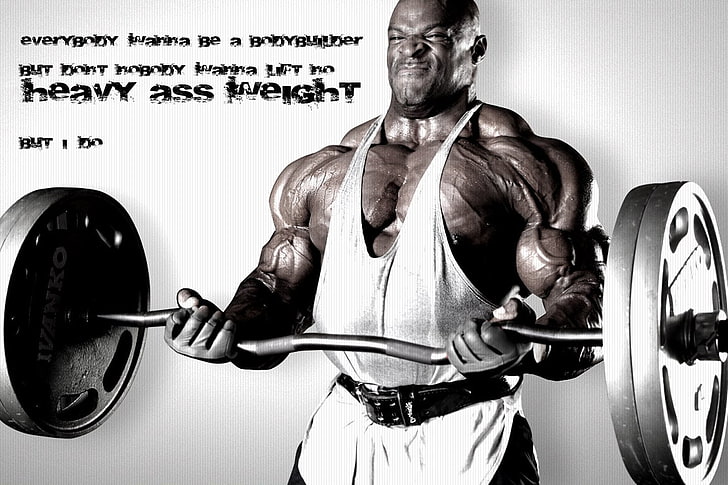
Trap Bar: The hexagonal-shaped barbell, commonly known as the trap bar, facilitates a more ergonomic lifting posture. Frequently, it is employed in exercises such as deadlifts, squats, and other movements that necessitate a comparatively impartial grip. The trap bar is a versatile piece of equipment that can cater to individuals of varying levels of expertise in weightlifting.

Safety Squat Bar: A unique barbell created specifically for squatting is the safety squat bar. Its cambered form and padded shoulder supports enable a more cozy and secure squatting stance. For people who have problems holding a conventional barbell due to shoulder or back ailments, the safety squat bar is appropriate.
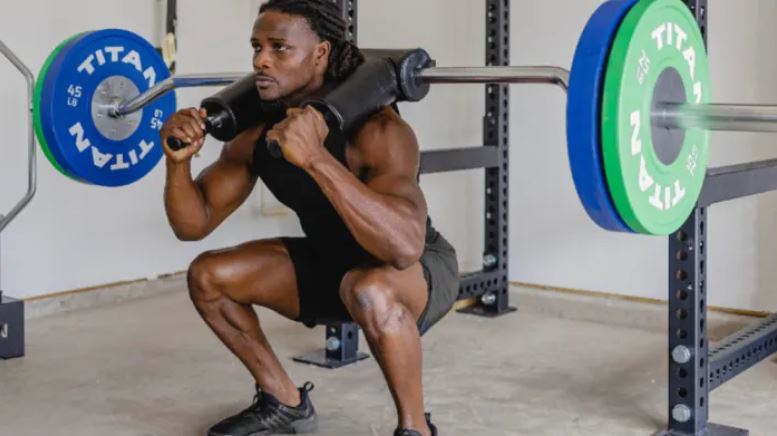
Swiss Bar: A versatile barbell that allows for various grasp widths and angles is the Swiss bar, sometimes referred to as the football bar or the multi-grip bar. For people who have shoulder or elbow problems, it is excellent for bench press, overhead press, and rows.
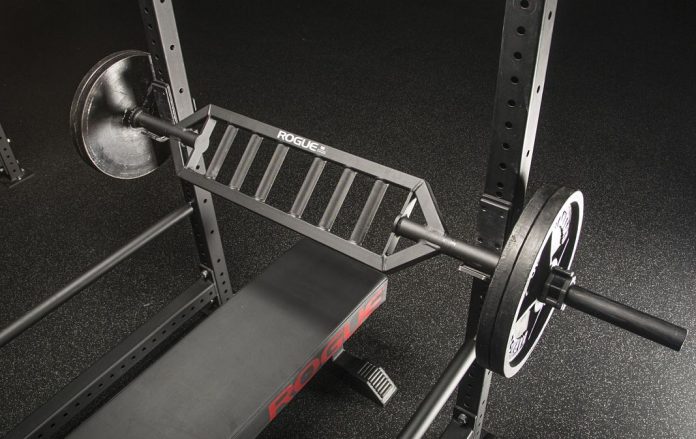
Curl Bar: A particular barbell created for bicep curls and other arm exercises is the curl bar, commonly referred to as the EZ curl bar. Its zig-zag design makes it easier to hold and lessens stress on the wrists and elbows.
The most popular kinds of barbells used in weightlifting and strength training are just a handful of them. Choosing the best barbell for your training objectives can make all the difference in your progress toward becoming fit. Each variety has its own own characteristics and advantages.
Smaller weights called dumbbells can be handled in each hand. They engage both the upper and lower bodies and are excellent for activities that call for a wider range of motion.
Dumbbells with adjustments: These flexible dumbbells let users change the weight to suit their demands. They come in both conventional and contemporary designs, with the latter having a dial or pin system to adjust the weight.
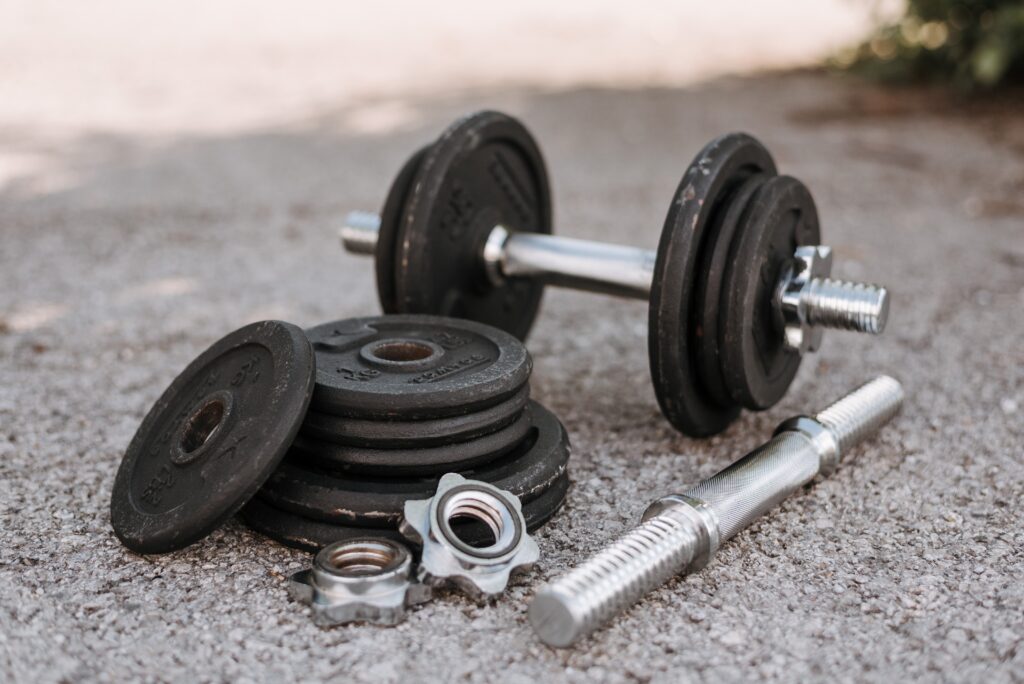
Fixed weight dumbbells: Fixed weight dumbbells are a type of weightlifting equipment that possess a predetermined weight, requiring individuals to select their desired weight prior to commencing their workout regimen. Dumbbells are available in a diverse range of weights, spanning from 1 pound to more than 100 pounds.

Rubber coated dumbbells: The rubber coating on these dumbbells serves a dual purpose of enhancing grip stability and safeguarding the equipment against potential damage resulting from accidental drops. Kettlebells are frequently employed in CrossFit training regimens and are well-suited for demanding physical activities.

Hexagonal dumbbells: The hexagonal shape of these dumbbells facilitates improved grip and control during exercise routines. Kettlebells are commonly composed of cast iron material and are available in various weight categories.
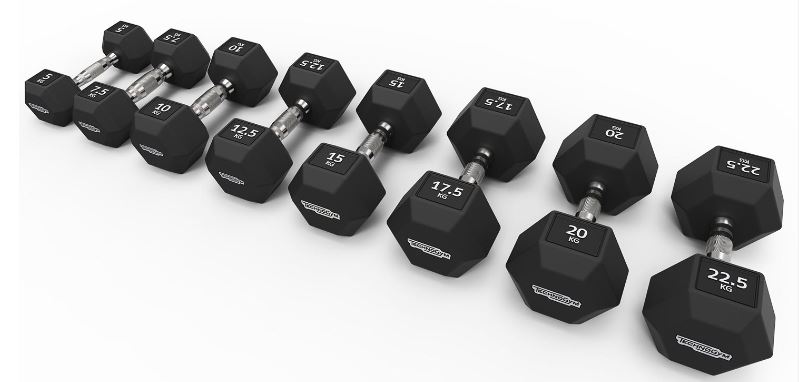
Neoprene dumbbells: The neoprene coating on these dumbbells offers a comfortable grip and reduces the likelihood of slippage during exercise. These items are offered in a variety of vivid hues and are favored by novices.

Powerblock dumbbells: This particular category of dumbbells employs a stacking mechanism to modify the weight. Compactness and ease of storage render them a viable choice for home gym setups.
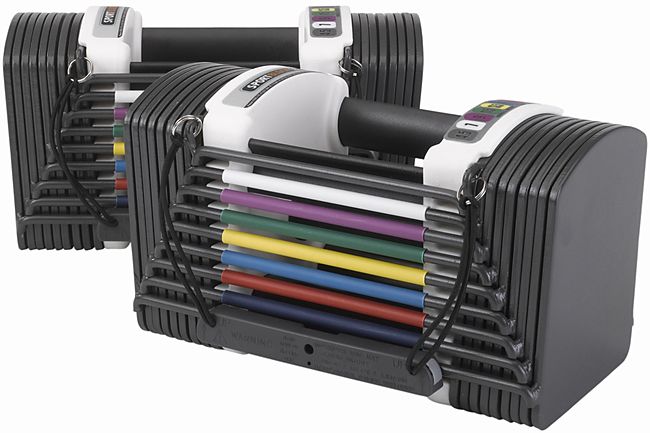
Selectorized dumbbells: These are similar to powerblock dumbbells but are more advanced and typically found in commercial gyms. They have a selectorized weight system that allows users to adjust the weight with the push of a button.

Dumbbells, in conclusion, are a crucial piece of equipment for anyone wishing to increase strength and muscular mass. With so many options, it’s critical to pick the one that best suits your fitness objectives and personal tastes.
Kettlebells: While kettlebells and dumbbells are comparable in size, their distinct shape enables more dynamic motions. Exercises like Turkish get-ups and swings frequently involve their utilization.
Traditional kettlebell: This form of kettlebell is the most popular and has a traditional shape with a handle on top and a rounded bottom. They are ideal for exercises like swings, presses, and snatches and normally range in weight from 4 kg to 32 kg.

Adjustable kettlebell: The adjustable kettlebell, as its nomenclature implies, permits weight customization through the addition or subtraction of plates. Adjustable kettlebells are a viable alternative for individuals who prefer not to procure multiple kettlebells, yet desire the flexibility to vary the weight for diverse exercises.
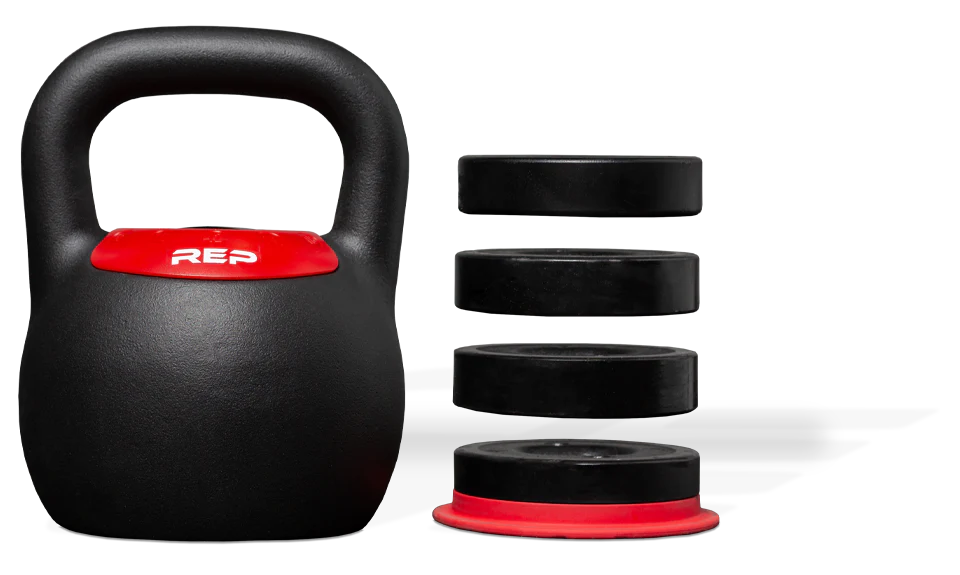
Competition kettlebell: The kettlebell variant utilized in kettlebell sport competitions adheres to precise weight and size criteria. Dumbbells are typically classified by their weight and standardized shape, rendering them well-suited for physical activities that necessitate uniformity in motion and posture.
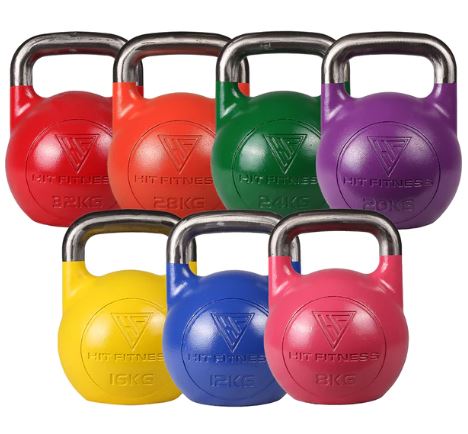
Mini kettlebell: It typically weighs between 1 kilogram and 4 kg and is a scaled-down version of the conventional kettlebell. For persons just getting started with kettlebell training or for workouts that call for lesser weights, they are ideal.
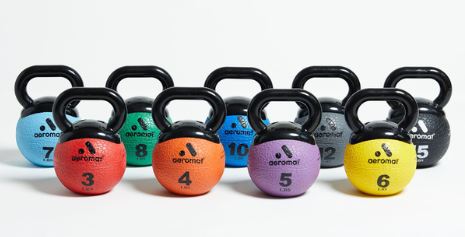
Soft kettlebell: The kettlebells possess a pliable, rubberized outer layer and are imbued with either sand or water. These items are beneficial for individuals seeking a more ergonomic hold or for physical activities that necessitate a gentler impact on the physique.
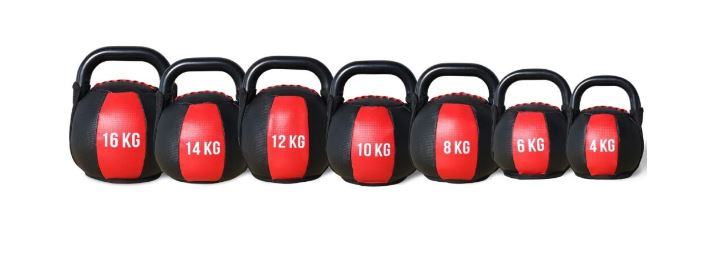
Irrespective of the variant of kettlebell one opts for, it can serve as a versatile and efficacious instrument for enhancing strength, power, and overall physical fitness. Selecting the appropriate weight and employing correct technique are crucial for preventing harm and maximizing the benefits of physical exercise.
Weight machines: Weight machines offer a controlled range of motion and are made to target particular muscle groups. They are excellent for novices and frequently used in rehabilitation settings.
Chest Press Machine: This machine targets the chest muscles and involves pushing a weighted bar away from the body while seated.
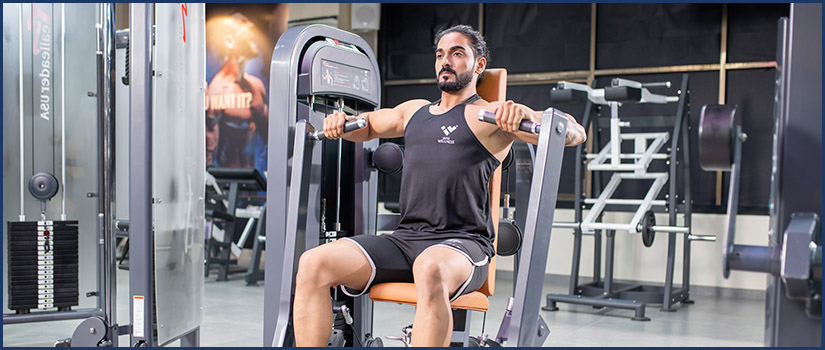
Leg Press Machine: This machine targets the leg muscles and involves pushing a weighted platform away from the body while seated.
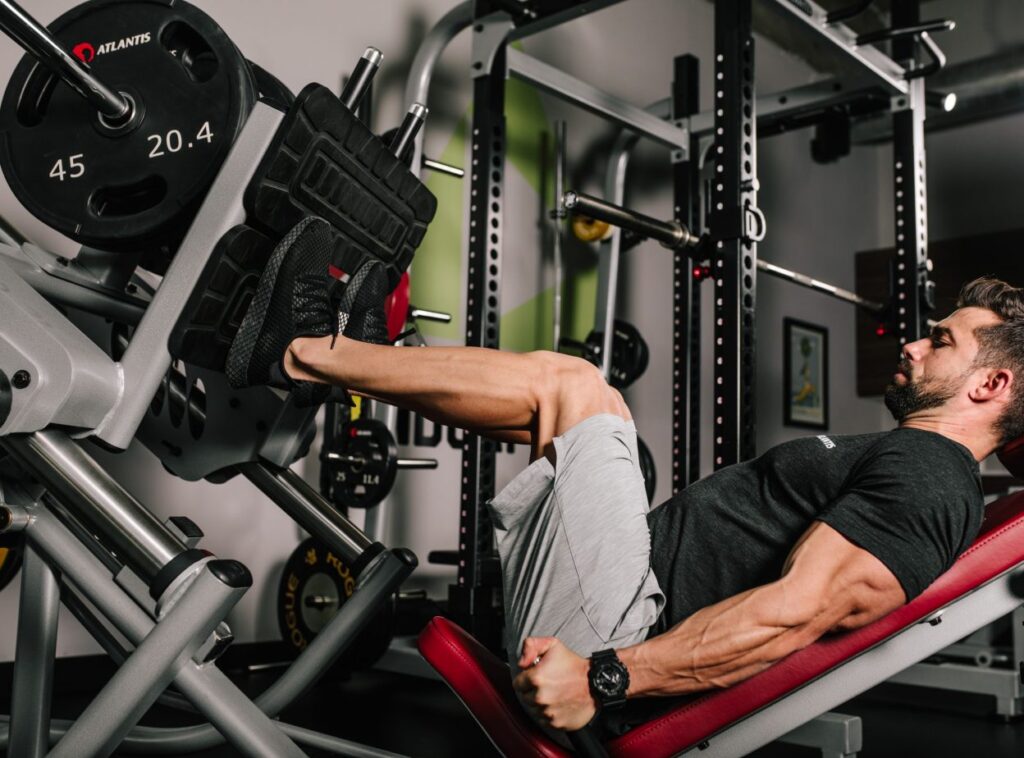
Lat Pulldown Machine: This machine targets the upper back muscles and involves pulling a weighted bar down towards the body while seated.
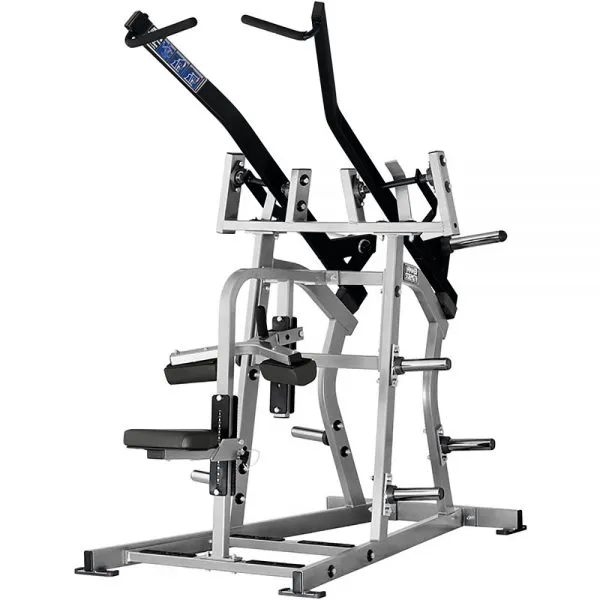
Cable Crossover Machine: This machine targets the chest and back muscles and involves pulling two weighted cables towards the body while standing.

Leg Extension Machine: The apparatus in question is designed to specifically isolate and engage the quadriceps muscle group located in the lower extremities. The exercise involves performing leg extensions while seated, with the resistance provided by weights.

Seated Row Machine: This machine targets the upper back muscles and involves pulling a weighted bar towards the body while seated.

Bicep Curl Machine: This machine targets the bicep muscles in the arms and involves curling a weighted bar towards the body while seated.

Shoulder Press Machine: This machine targets the shoulder muscles and involves pushing a weighted bar away from the body while seated.

These are but a few sorts of the numerous weight machines that are available. Each machine has settings that may be changed to accommodate users of various fitness levels and targets a particular muscle region. To prevent injuries and maximize your workout, it’s crucial to use weight machines appropriately.
Cable machines: Cable machines use a system of pulleys and cables to provide resistance. They are versatile and can be used for a wide variety of exercises, including cable crossovers and rows.
Cable Crossover Machine: This machine has two adjustable arms that can be moved up and down and side to side. It’s used for chest exercises such as cable flyes and chest presses.

Cable Row Machine: This machine has a horizontal cable attached to a handle or grip. It’s used to perform rowing exercises that target the back muscles.

Cable Lat Pulldown Machine: This machine has a long cable attached to a bar or handle that’s pulled down to the front of the body. It’s used to target the latissimus dorsi (lats) muscles in the back.

Cable Tricep Pushdown Machine: This machine has a short cable attached to a handle or bar that’s pulled down to target the triceps muscles in the arms.

Cable Bicep Curl Machine: This machine has a short cable attached to a handle or bar that’s pulled up to target the biceps muscles in the arms.

Cable Leg Press Machine: This machine has a cable attached to a footplate that’s used to perform leg press exercises.

Cable Glute Kickback Machine: This machine has a cable attached to a foot strap that’s used to perform glute kickback exercises.

Overall, cable machines are versatile pieces of equipment that can be used to target a variety of muscle groups. They are often used as a supplement to free weight exercises and can be adjusted to accommodate different fitness levels and workout goals.
Resistance bands: Because they are portable and light, resistance bands are a fantastic choice for workouts done at home. They are available in various resistance levels and can be used for activities like leg extensions and bicep curls.
Loop Bands: These are flat, circular bands with varying degrees of resistance. They can be used for upper body exercises like bicep curls and tricep extensions as well as lower body exercises like squats and lunges.

Therapy Bands: The majority of the time, physical therapy or rehabilitation exercises use these long, thin bands. For gentle strengthening activities like shoulder rotations and ankle flexion, they provide low resistance.

Tube Bands: These are similar to loop bands, but they have handles attached to them. They come in a range of resistance levels and are ideal for upper body exercises, such as chest presses and rows.

Figure 8 Bands: These bands are shaped like a figure 8 and offer a higher level of resistance compared to loop or therapy bands. They are typically used for exercises that require pulling or pushing movements, such as lateral raises or bicep curls.

Pull-Up Bands: The aforementioned items are wide and extended straps that serve as aids for performing pull-up workouts. Assistance bands are commonly fastened to a pull-up bar and serve to aid the user in executing a complete pull-up or chin-up.

Overall, resistance bands are a great addition to any workout routine, offering a convenient and affordable way to build strength and improve flexibility.
Medicine balls: Weighted balls called “medicine balls” can be used for exercises like Russian twists and wall balls. They are excellent for enhancing strength and explosive power.
Slam balls: Pounded against the ground or a wall, these medicine balls are made to be pounded. They weigh between 10 and 50 pounds and have a thick rubber shell. Slam balls, which are frequently used in HIIT workouts to increase power and explosiveness, can aid.

Wall balls: Wall balls are similar to slam balls, but they are designed to be thrown against a wall instead of slammed on the ground. They typically weigh between 6 and 20 pounds and are used in exercises such as wall ball shots and squat throws.

Soft medicine balls: Soft medicine balls are lighter than slam balls and are typically used for exercises that require throwing or catching, such as Russian twists and partner passes. They are usually made of a soft, pliable material like rubber or foam and range in weight from 2 to 20 pounds.

Dual-grip medicine balls: These medicine balls have handles on each side, making them easier to grip during exercises such as wood chops and overhead presses. They are usually made of a rubber shell and range in weight from 6 to 20 pounds.

Power medicine balls: Power medicine balls are similar to slam balls in that they are designed for explosive movements, but they are smaller and more compact. They typically weigh between 2 and 8 pounds and are used for exercises such as chest passes and rotational throws.

Whatever kind of medicine ball you decide to use, adding it to your workout program can help you build strength, enhance coordination, and offer variety.
Overall, there are many different kinds of weight lifting apparatuses accessible, each with special advantages and uses. In order to avoid injury, it’s critical to select the correct equipment for your level of experience and fitness goals as well as to employ perfect form and technique.
